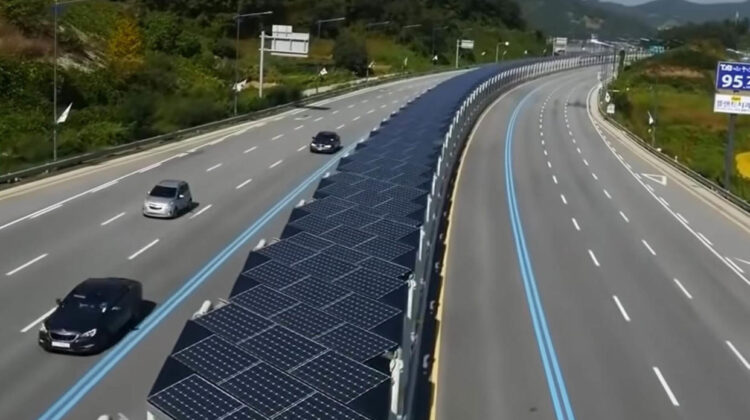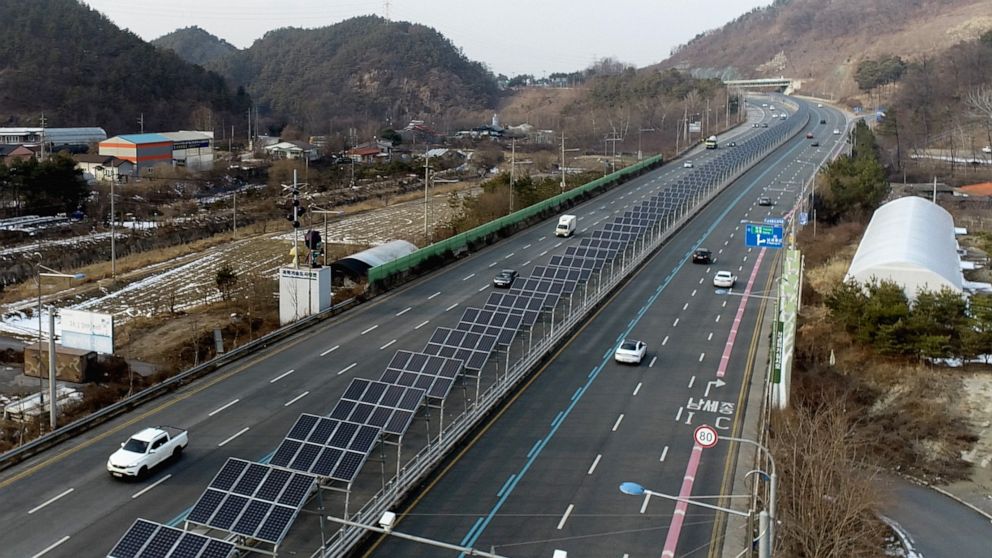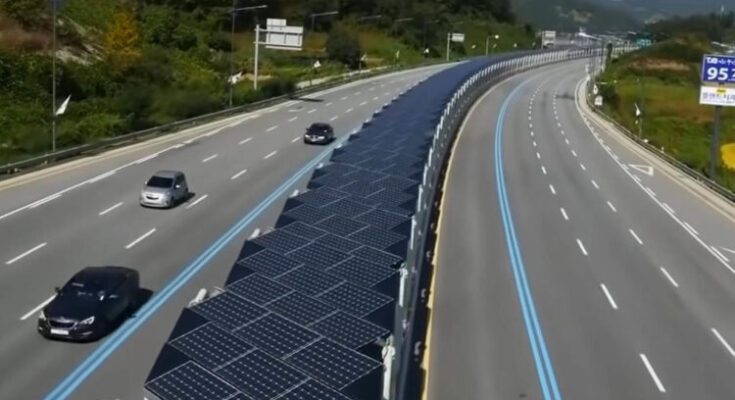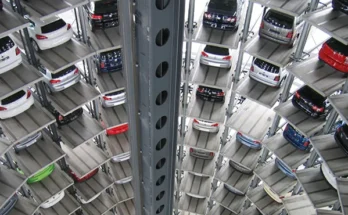South Korea has long been recognized as a technological powerhouse, pushing the boundaries of innovation in various fields. However, beyond its dominance in electronics, robotics, and automotive industries, the country is also making remarkable strides in sustainable infrastructure. One of its latest and most ambitious projects is a solar-powered cycling superhighway—an initiative that merges renewable energy generation with eco-friendly transportation.
A Revolutionary Concept: The Solar Roadway

Imagine a highway that not only serves as a vital transportation link but also generates clean energy. That’s precisely the vision behind South Korea’s groundbreaking solar road project. The country has ingeniously integrated solar panels into the road surface, allowing it to harness the sun’s energy and convert it into electricity. This electricity can then be used to power essential infrastructure such as streetlights, traffic signals, and even electric vehicle (EV) charging stations.
But the innovation doesn’t stop there. Beneath these solar panels lies a dedicated cycling path, offering cyclists a safe and sheltered route free from vehicle congestion. This unique design not only promotes the use of bicycles as a primary mode of transportation but also contributes to reducing carbon emissions and improving air quality in urban areas.

Benefits of a Solar-Powered Cycling Highway
The integration of solar energy technology with cycling infrastructure offers a multitude of environmental, economic, and social benefits. This forward-thinking project is a shining example of how sustainable development can be achieved through innovative urban planning.

1. Clean Energy Generation
One of the most significant advantages of this project is its ability to generate renewable energy. The solar panels embedded in the road surface capture sunlight and convert it into electricity, which can then be used to power public utilities such as streetlights, traffic control systems, and other essential infrastructure. This reduces dependence on fossil fuels and contributes to the country’s clean energy goals.
2. Reducing Carbon Footprint
By promoting cycling and reducing reliance on fossil fuel-powered transportation, South Korea is actively cutting down on carbon emissions. More bicycles on the road mean fewer cars, which directly translates to lower greenhouse gas emissions and a significant reduction in the urban heat island effect.
3. Improved Air Quality
Air pollution is a growing concern in many metropolitan areas, and South Korea is no exception. This solar-powered cycling highway encourages people to opt for bicycles instead of cars, leading to fewer vehicle emissions. Cleaner air results in healthier living conditions, lowering the risk of respiratory diseases and improving overall public health.
4. Enhancing Cycling Safety
Cycling in urban environments often comes with safety concerns, especially when bike lanes share the road with motor vehicles. However, this dedicated cycling highway provides a protected, traffic-free zone for cyclists. Shielded from the elements and separated from cars, it offers a safe and comfortable route that encourages more people to embrace cycling as a viable mode of transport.
5. Advancing Sustainable Infrastructure
South Korea’s solar-powered cycling highway is a bold statement of the country’s commitment to sustainable development. By integrating renewable energy solutions into public infrastructure, the nation is setting an example for the rest of the world. The project demonstrates how urban planning can be both functional and environmentally responsible, inspiring other countries to explore similar initiatives.
A Glimpse into the Future of Urban Mobility
As cities around the world grapple with challenges such as climate change, traffic congestion, and air pollution, innovative projects like South Korea’s solar-powered cycling highway offer a glimpse into the future of urban mobility. By prioritizing renewable energy and sustainable transportation, governments and urban planners can create cleaner, greener, and more efficient cities.
The success of this initiative could pave the way for more widespread adoption of similar infrastructure worldwide. Countries looking to modernize their transportation networks while addressing environmental concerns may draw inspiration from South Korea’s pioneering efforts.
Conclusion
South Korea’s solar-powered cycling superhighway is more than just an impressive engineering feat; it represents a forward-thinking approach to sustainable urban development. By combining clean energy generation with eco-friendly transportation, this project showcases the potential for smart, green infrastructure to transform the way people commute and interact with their cities. As the world moves towards a more sustainable future, initiatives like this serve as a beacon of innovation, demonstrating how technology and environmental responsibility can go hand in hand.



